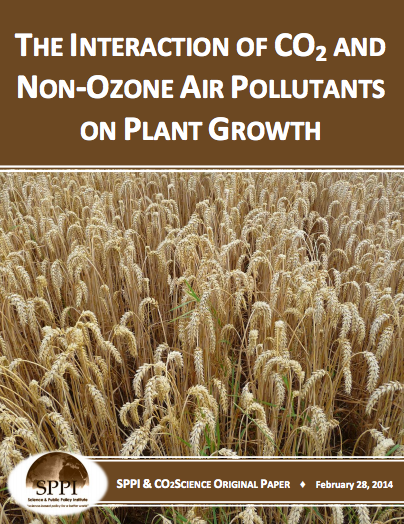News / Nature
The Interaction Of CO2 And Non-Ozone Air Pollutants On Plant Growth

We begin this review of the interaction of CO2 and non-ozone air pollutants on plant growth with the study of Deepak and Agrawal (2001)1, who grew two cultivars of soybeans (Glycine max L. Merr. Cv. PK472 and Bragg) in open-top chambers that were maintained at atmospheric CO2 concentrations of either 350 or 600 ppm, both alone and in combination with 60 ppb SO2, in order to determine the individual and interactive effects of elevated CO2 and this common air pollutant on the growth and yield of this important crop. This work revealed that exposure to elevated SO2 significantly reduced both total plant biomass and grain yield by approximately 18% in both cultivars. In contrast, elevated CO2 significantly increased total plant biomass and grain yield in both cultivars by averages of 30 and 34%, respectively. And when the plants were exposed simultaneously to elevated SO2 and CO2, the negative effects of SO2 were completely ameliorated.
Two years later, the same scientists – Agrawal and Deepak (2003)2 – conducted a similar study of two cultivars of wheat (Triticum aestivum L. cv. Malviya 234 and HP1209) in open-top chambers maintained at atmospheric CO2 concentrations of 350 and 600 ppm both alone and in combination with 60 ppb SO2, in order to study the individual and interactive effects of elevated CO2 and SO2 on another of the world's major crops. This study revealed that the same exposure to elevated CO2 boosted photosynthetic rates by 58 and 48% in M234 and HP1209, respectively, while fumigation with elevated SO2 had no significant impact on rates of photosynthesis in either cultivar. However, plants grown in the combined treatment of elevated CO2 and elevated SO2 displayed photosynthetic rates that were 42 and 38% greater than those measured in control plants for M234 and HP1209, respectively.
